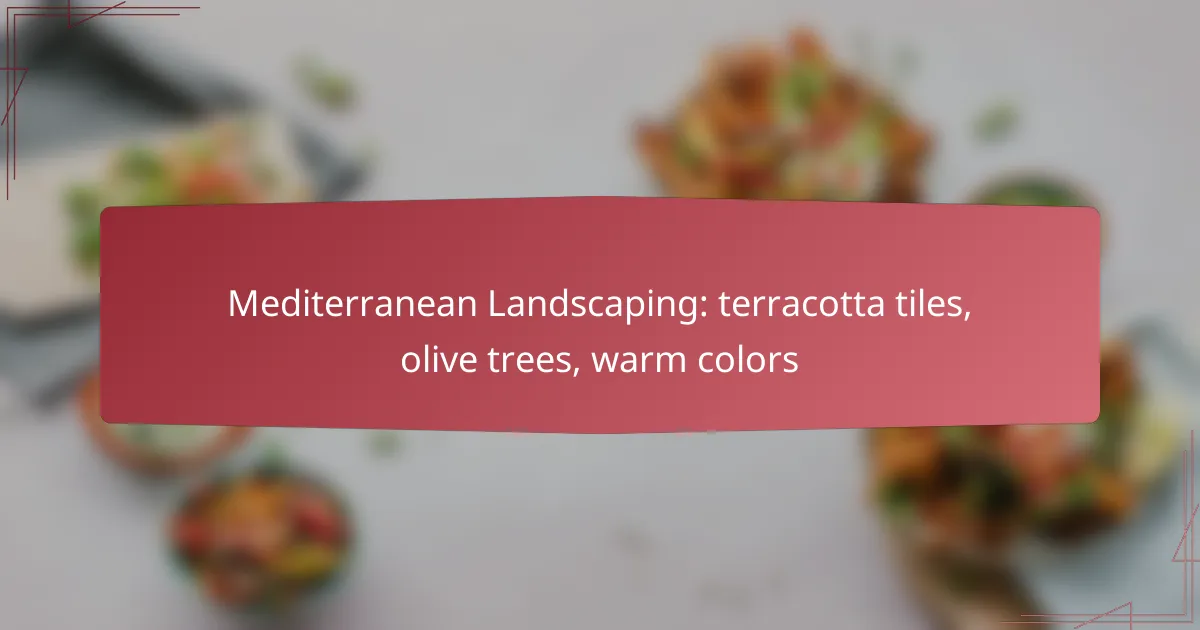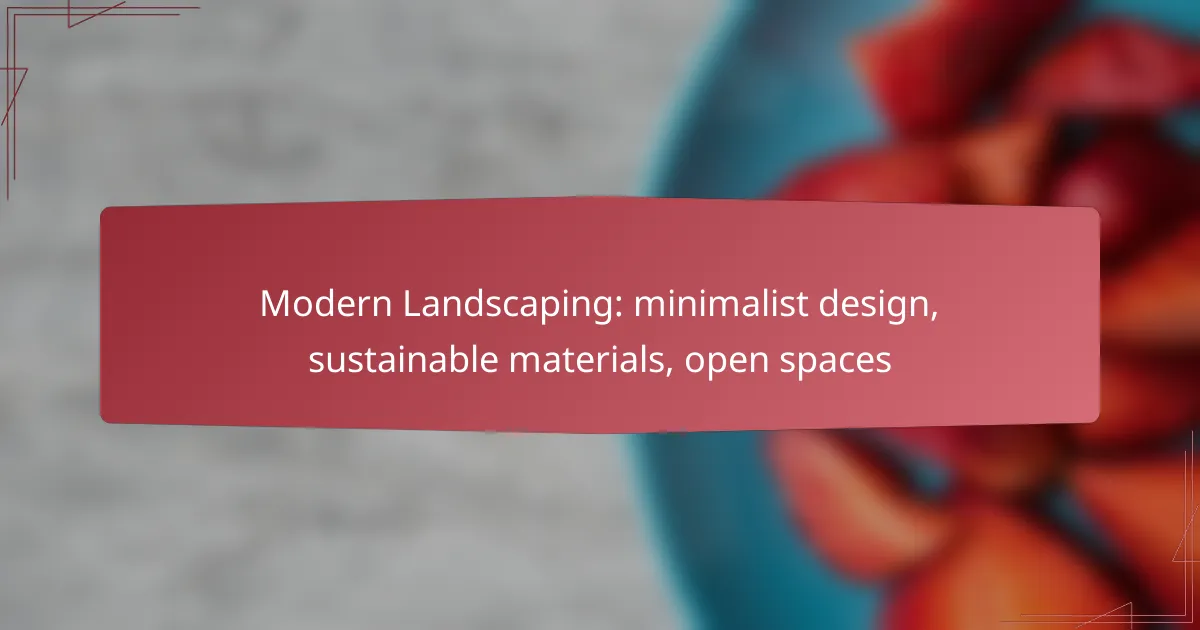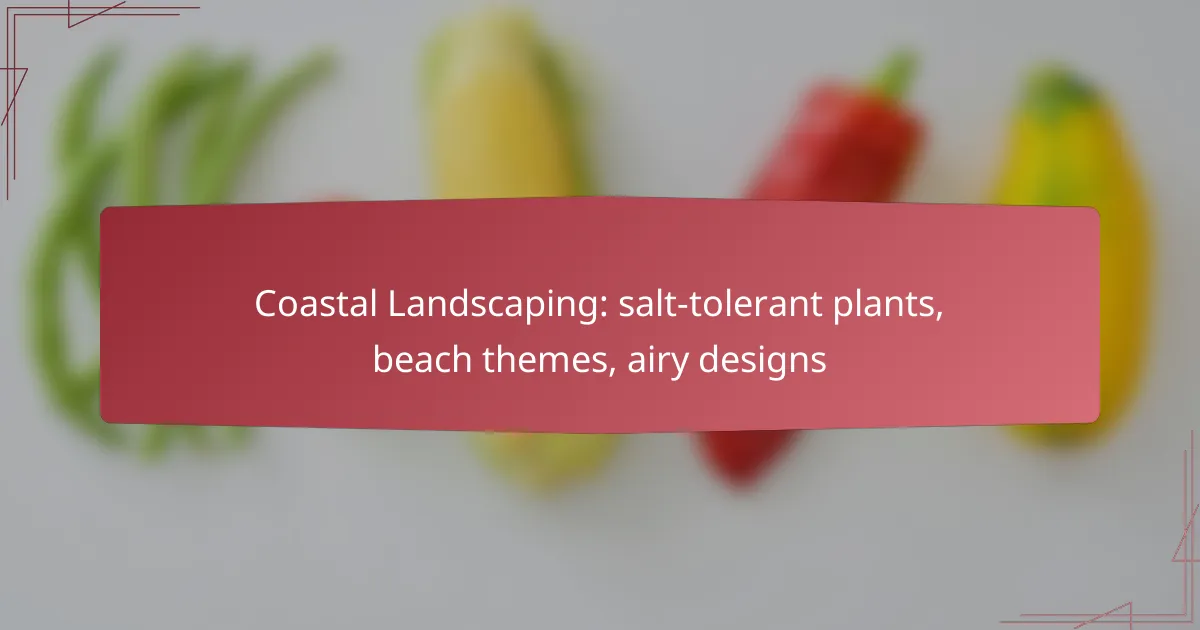Desert landscaping offers a sustainable solution for arid environments by incorporating drought-resistant plants that thrive with minimal water. By utilizing gravel paths, homeowners can create functional and visually appealing walkways that require little maintenance. This approach not only conserves water but also enhances the overall beauty of outdoor spaces while reducing upkeep costs.
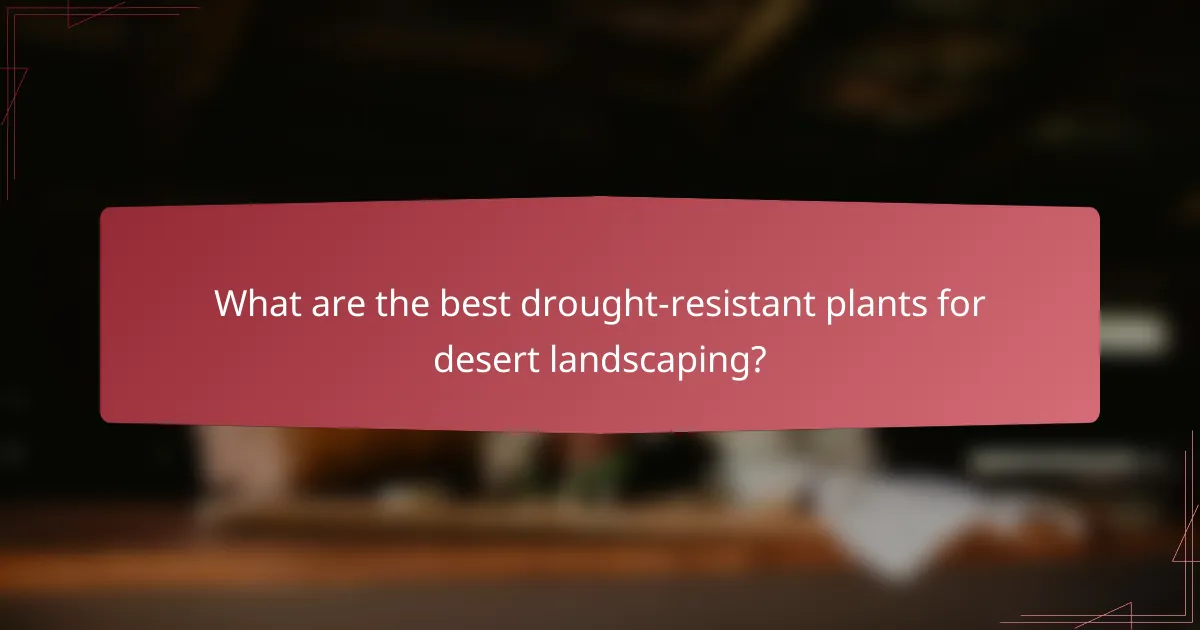
What are the best drought-resistant plants for desert landscaping?
The best drought-resistant plants for desert landscaping are those that thrive in arid conditions with minimal water requirements. These plants not only conserve water but also enhance the aesthetic appeal of your landscape.
Agave species
Agave species are well-known for their striking rosettes and ability to withstand extreme drought. These succulent plants require very little water once established, making them ideal for desert gardens.
Common varieties include Agave americana and Agave parryi, which can grow in poor soil and tolerate high temperatures. When planting agaves, ensure they have good drainage to prevent root rot.
Desert marigold
Desert marigold is a perennial that produces bright yellow flowers, adding vibrant color to arid landscapes. This plant thrives in full sun and requires minimal water, making it a low-maintenance choice.
It is important to plant desert marigold in well-drained soil and to avoid overwatering, as this can lead to disease. This plant typically blooms from spring to fall, providing long-lasting visual interest.
Red yucca
Red yucca is a hardy plant that features long, arching leaves and tall flower spikes that attract hummingbirds. This drought-resistant plant is perfect for creating a dramatic focal point in your garden.
It thrives in full sun and can tolerate a variety of soil types, though it prefers sandy or rocky conditions. Regular pruning of spent flower stalks will encourage new growth and maintain its appearance.
California poppy
California poppy is a vibrant annual that flourishes in dry conditions and produces bright orange flowers. This plant is not only drought-tolerant but also self-seeding, ensuring a continuous display year after year.
To grow California poppies, sow seeds in well-drained soil and full sunlight. They require little maintenance, making them an excellent choice for low-water gardens.
Mexican feather grass
Mexican feather grass is a delicate ornamental grass that adds texture to desert landscapes. Its fine, wispy foliage sways beautifully in the breeze and is highly drought-resistant.
This grass prefers well-drained soil and can thrive in poor conditions. It is essential to avoid overwatering, as this can lead to weak growth. Mexican feather grass is also a great option for erosion control on slopes or hillsides.
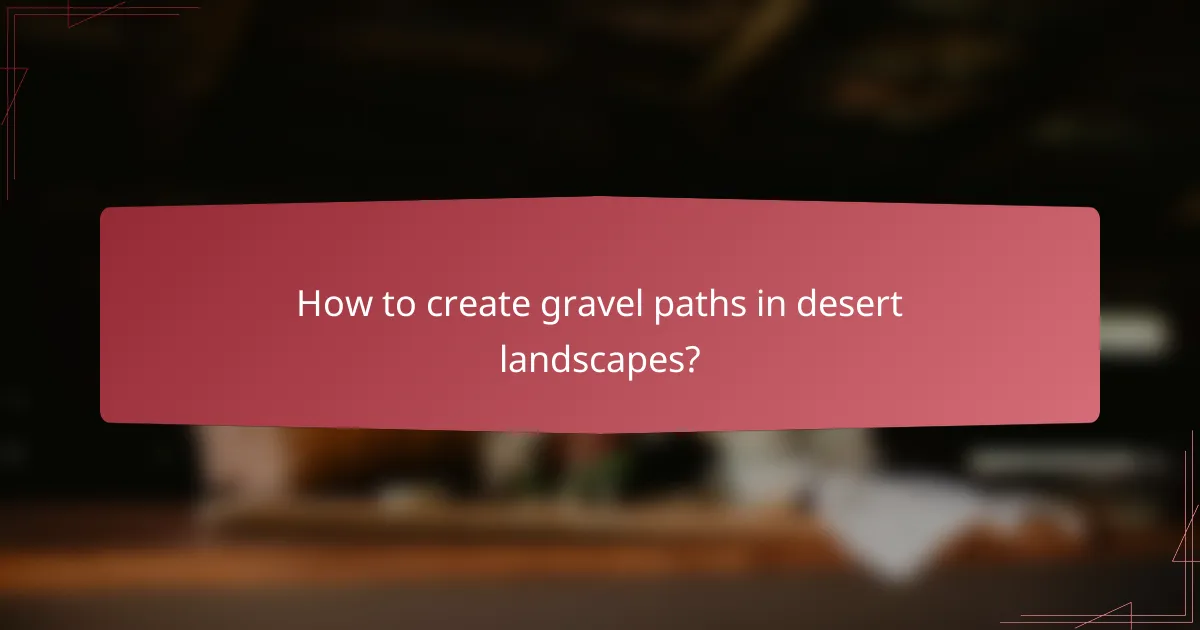
How to create gravel paths in desert landscapes?
Creating gravel paths in desert landscapes involves selecting appropriate materials and techniques to ensure durability and low maintenance. These paths not only enhance the aesthetic appeal but also provide functional walkways that withstand arid conditions.
Choosing the right gravel type
Selecting the right type of gravel is crucial for the longevity and appearance of your paths. Common options include decomposed granite, river rock, and crushed stone, each offering different textures and colors. Decomposed granite is often favored for its compactness and natural look, while river rock provides a smooth, polished finish.
When choosing gravel, consider the size of the stones; smaller gravel (around 1/4 inch) is easier to walk on and less likely to shift, while larger stones (up to 1 inch) can create a more rustic appearance. Aim for a color that complements your surrounding landscape for a cohesive look.
Installation techniques
Proper installation of gravel paths is essential for preventing erosion and maintaining a neat appearance. Start by marking the desired path layout and excavating the area to a depth of about 3-4 inches. This depth allows for adequate drainage and prevents weeds from growing through the gravel.
Next, lay down a weed barrier fabric to suppress unwanted plant growth, then fill the area with your chosen gravel type. Compact the gravel using a plate compactor to create a stable surface. For added stability, consider edging the path with stones or timber to keep the gravel contained.
Maintenance tips
Maintaining gravel paths in desert landscapes requires minimal effort but regular checks can prolong their life. Periodically rake the gravel to redistribute it evenly and fill in any low spots that may develop over time. This helps maintain a smooth walking surface and prevents water pooling.
Additionally, inspect the path for weeds and remove them promptly to prevent them from taking root. If you notice significant erosion or displacement of gravel, simply add more gravel to the affected areas and recompact as necessary. Keeping the path clear of debris will also enhance its appearance and functionality.
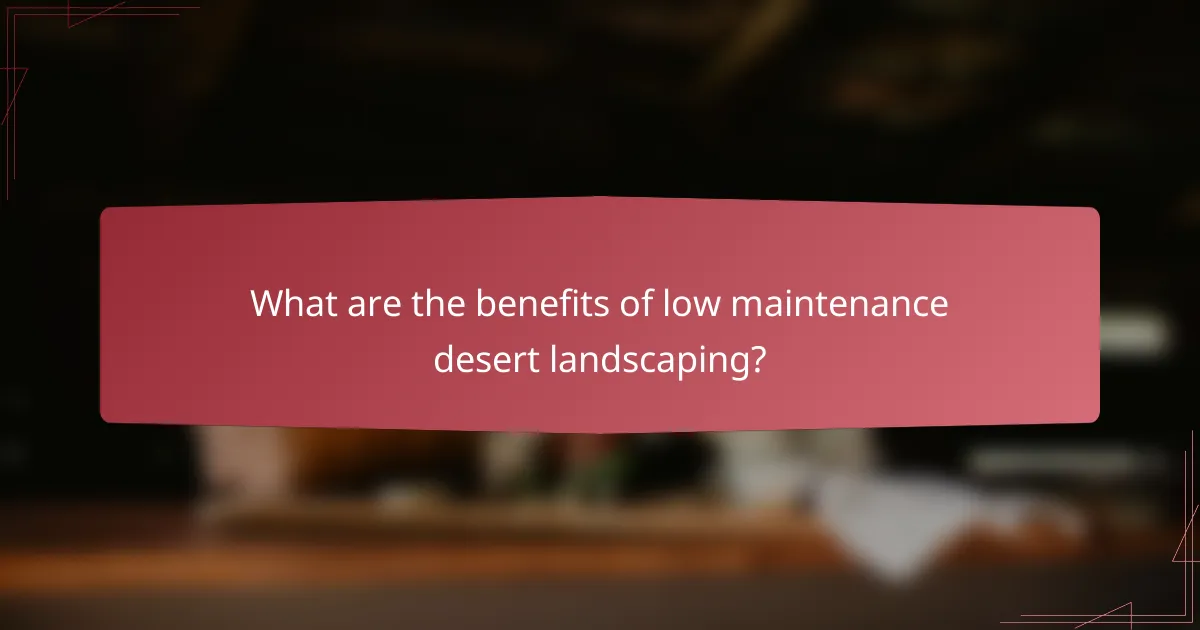
What are the benefits of low maintenance desert landscaping?
Low maintenance desert landscaping offers several advantages, including reduced water usage, lower costs, and enhanced environmental sustainability. By utilizing drought-resistant plants and gravel paths, homeowners can create beautiful outdoor spaces that require minimal upkeep.
Water conservation
One of the primary benefits of low maintenance desert landscaping is significant water conservation. Drought-resistant plants are adapted to thrive in arid conditions, requiring less water than traditional landscaping. This can lead to a reduction in water bills, especially in regions where water costs are high.
Consider incorporating native plants that are naturally suited to your local climate. These plants often need minimal irrigation once established, making them ideal for sustainable landscaping. For example, succulents and cacti can survive on limited water, further enhancing your landscape’s efficiency.
Cost-effectiveness
Low maintenance desert landscaping can be more cost-effective in the long run due to reduced water and maintenance costs. While the initial investment in drought-resistant plants and materials like gravel may be higher, the savings on water bills and landscaping services can quickly offset these expenses.
Additionally, using gravel paths instead of traditional grass lawns eliminates the need for mowing, fertilizing, and pest control, further lowering ongoing costs. Homeowners can save hundreds of dollars annually by adopting this approach.
Environmental sustainability
Low maintenance desert landscaping promotes environmental sustainability by reducing water consumption and minimizing the need for chemical fertilizers and pesticides. This approach helps preserve local ecosystems and supports biodiversity by using native plants that provide habitats for local wildlife.
Moreover, gravel and rock features can help with soil erosion control and reduce runoff, allowing rainwater to penetrate the ground more effectively. This practice contributes to healthier soil and a more resilient landscape, making it a responsible choice for environmentally conscious homeowners.

What are the key design principles for desert landscaping?
Key design principles for desert landscaping focus on using drought-resistant plants, efficient water management, and incorporating hardscapes to create a sustainable and low-maintenance environment. These principles help to conserve resources while enhancing the aesthetic appeal of arid regions.
Using native plants
Utilizing native plants is essential in desert landscaping as they are adapted to the local climate and soil conditions, requiring less water and maintenance. Examples include species like agave, yucca, and desert sage, which thrive in arid environments.
When selecting native plants, consider their growth habits, bloom times, and seasonal changes to create visual interest throughout the year. Grouping plants with similar water needs can also optimize irrigation efficiency.
Incorporating hardscapes
Hardscapes, such as gravel paths, stone walls, and patios, play a crucial role in desert landscaping by reducing water usage and providing structure. These elements can help manage runoff and prevent soil erosion while adding visual contrast to the landscape.
When designing hardscapes, choose materials that blend with the natural environment, such as decomposed granite or flagstone. Ensure paths are wide enough for easy access and consider using permeable surfaces to allow water infiltration.
Creating microclimates
Creating microclimates can enhance plant survival and comfort in desert landscapes. By strategically placing trees, shrubs, or structures, you can provide shade and reduce wind exposure, which helps retain moisture and regulate temperature.
To develop effective microclimates, consider planting taller vegetation on the west side of your garden to block afternoon sun. Additionally, incorporating water features can increase humidity and attract beneficial wildlife, further supporting your desert garden’s ecosystem.

How to select the right materials for desert landscaping?
Selecting the right materials for desert landscaping involves choosing drought-resistant plants, durable surfaces, and low-maintenance features. Focus on materials that withstand extreme temperatures and require minimal water to thrive.
Durable materials
When selecting durable materials for desert landscaping, consider options like gravel, decomposed granite, and stone. These materials not only provide a sturdy foundation but also help with drainage, preventing water accumulation that can harm plants.
Additionally, using permeable pavers can enhance the landscape while allowing rainwater to seep into the ground. This approach reduces runoff and supports the local ecosystem.
Color and texture considerations
Color and texture play a significant role in desert landscaping, influencing both aesthetics and functionality. Opt for earthy tones like browns, tans, and muted greens that blend with the natural surroundings.
In terms of texture, combining smooth stones with rougher surfaces can create visual interest. Incorporating various textures helps to break up the landscape and can enhance the overall appeal of your outdoor space.

What are common mistakes in desert landscaping?
Common mistakes in desert landscaping include overwatering plants and ignoring the local climate. These errors can lead to unhealthy plants and wasted resources, undermining the purpose of creating a sustainable landscape.
Overwatering plants
Overwatering is a prevalent mistake in desert landscaping, as many people mistakenly believe that all plants require frequent watering. In reality, drought-resistant plants thrive on minimal moisture and can suffer from root rot if overwatered. It’s crucial to assess the specific water needs of each plant species.
A good rule of thumb is to water deeply but infrequently, allowing the soil to dry out between watering sessions. For most desert plants, this may mean watering once every two to four weeks, depending on rainfall and temperature.
Ignoring local climate
Ignoring the local climate can severely impact the success of a desert landscape. Each region has unique weather patterns, including temperature ranges and rainfall amounts, which directly affect plant selection and care. Understanding these factors is essential for creating a thriving environment.
For instance, choosing native plants that are adapted to local conditions can significantly reduce maintenance needs and water usage. Researching the average high and low temperatures, as well as seasonal rainfall, will help in selecting the right plants for your specific area.

